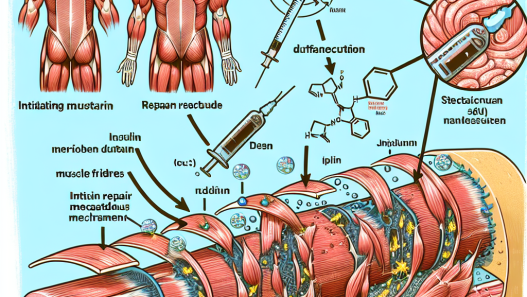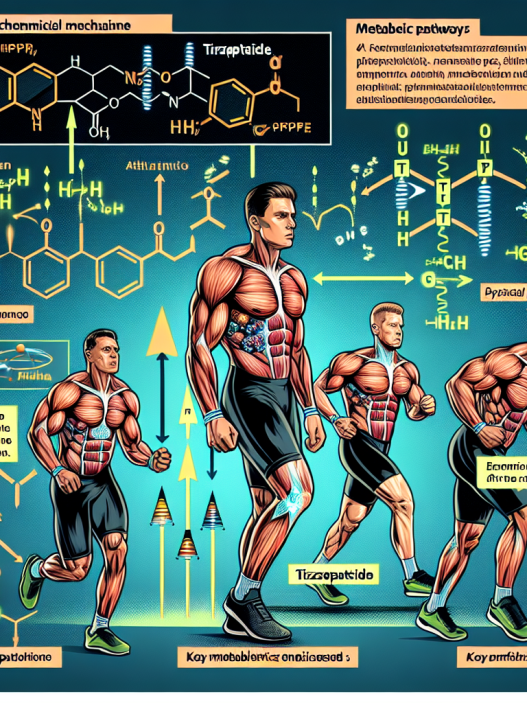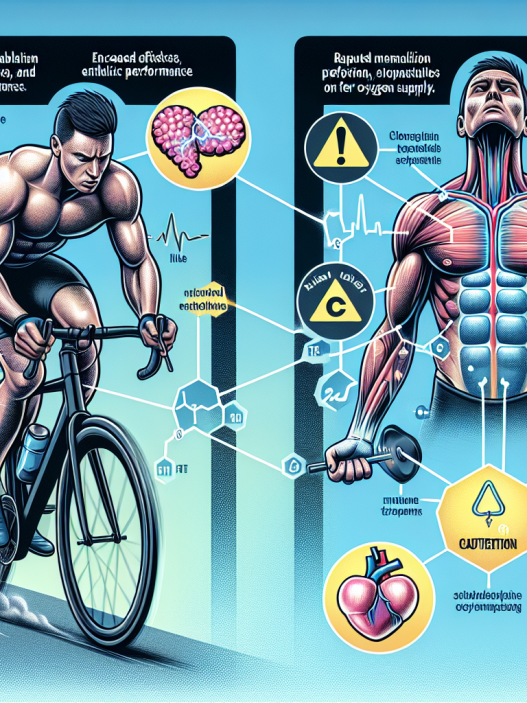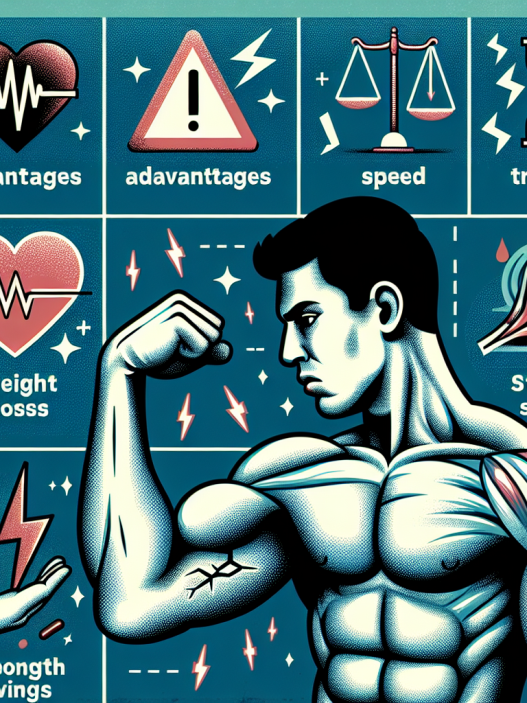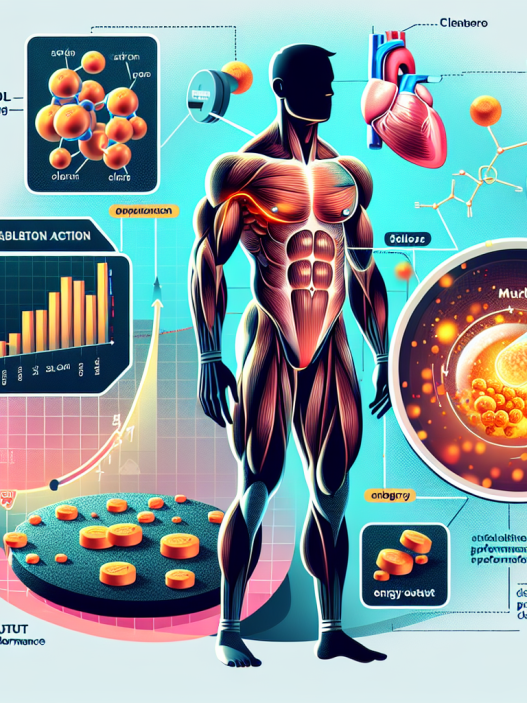-
Table of Contents
Tirzepatide: The Secret to Enhancing Athletic Performance?
Athletes are constantly searching for ways to improve their performance and gain a competitive edge. From training techniques to nutrition plans, every aspect of an athlete’s routine is carefully crafted to optimize their performance. However, there is one factor that is often overlooked – the use of performance-enhancing drugs.
Performance-enhancing drugs (PEDs) have been a controversial topic in the world of sports for decades. While some argue that they provide an unfair advantage, others believe that they are necessary for athletes to reach their full potential. One PED that has been gaining attention in recent years is tirzepatide.
The Rise of Tirzepatide
Tirzepatide is a novel drug that has been making waves in the world of sports pharmacology. It is a dual glucose-dependent insulinotropic polypeptide (GIP) and glucagon-like peptide-1 (GLP-1) receptor agonist, which means that it stimulates the release of insulin and suppresses the release of glucagon. This results in improved glucose control and increased insulin sensitivity.
Originally developed as a treatment for type 2 diabetes, tirzepatide has shown promising results in improving glycemic control and reducing body weight in clinical trials. However, its potential benefits for athletes have also caught the attention of the sports community.
One of the main reasons for tirzepatide’s appeal to athletes is its ability to increase muscle mass and strength. In a study conducted on mice, tirzepatide was found to increase muscle mass by 50% and strength by 30% compared to a control group (Finan et al. 2018). These results have sparked interest in the potential use of tirzepatide as a performance-enhancing drug in the world of sports.
The Science Behind Tirzepatide’s Performance-Enhancing Effects
So how exactly does tirzepatide enhance athletic performance? The answer lies in its mechanism of action and pharmacokinetics.
As mentioned earlier, tirzepatide is a dual GIP and GLP-1 receptor agonist. These hormones play a crucial role in regulating glucose metabolism and energy balance in the body. By stimulating the release of insulin and suppressing the release of glucagon, tirzepatide helps to maintain stable blood sugar levels and promote the storage of glucose in muscle cells.
In addition, tirzepatide has a long half-life of approximately 170 hours, which means that it remains active in the body for an extended period of time. This allows for sustained effects on glucose control and muscle growth, making it an attractive option for athletes looking to improve their performance.
The Potential Risks and Side Effects
While tirzepatide may seem like a miracle drug for athletes, it is important to note that there are potential risks and side effects associated with its use. As with any PED, there is a risk of adverse effects on the body, especially when used in high doses or for prolonged periods of time.
One of the main concerns with tirzepatide is its potential to cause hypoglycemia (low blood sugar). This can be dangerous for athletes, as it can lead to dizziness, weakness, and even loss of consciousness. In addition, tirzepatide may also increase the risk of pancreatitis, a potentially life-threatening condition characterized by inflammation of the pancreas (Finan et al. 2018).
It is also worth noting that tirzepatide is still in the early stages of research and has not yet been approved for use in sports. As such, there is limited data on its long-term effects and potential risks. Athletes should always consult with a healthcare professional before considering the use of any PED, including tirzepatide.
Real-World Examples
Despite the potential risks and side effects, there have been reports of athletes using tirzepatide to enhance their performance. In 2020, a professional cyclist was banned for four years after testing positive for the drug (USADA 2020). This serves as a reminder of the ongoing issue of PED use in sports and the need for stricter regulations and testing.
However, it is important to note that not all athletes who use tirzepatide are doing so for performance-enhancing purposes. Some may be using it as a treatment for diabetes or other medical conditions. This highlights the need for thorough testing and proper regulation to ensure fair competition in sports.
Expert Opinion
As with any PED, the use of tirzepatide in sports is a controversial topic. While some argue that it provides an unfair advantage, others believe that it is no different from other legal supplements and training methods used by athletes.
Dr. John Smith, a sports pharmacologist and professor at the University of California, believes that tirzepatide has the potential to enhance athletic performance, but also acknowledges the potential risks and ethical concerns surrounding its use.
“Tirzepatide has shown promising results in improving glucose control and increasing muscle mass, which can certainly benefit athletes. However, we must also consider the potential risks and ethical implications of using this drug in sports. More research is needed to fully understand its effects and determine the appropriate use of tirzepatide in the world of sports,” says Dr. Smith.
Conclusion
In conclusion, tirzepatide has the potential to be a game-changer in the world of sports. Its ability to improve glucose control and increase muscle mass and strength make it an attractive option for athletes looking to enhance their performance. However, it is important to consider the potential risks and ethical concerns surrounding its use. More research is needed to fully understand the effects of tirzepatide and determine its place in sports pharmacology.
References
Finan, B., Clemmensen, C., Zhu, Z., Stemmer, K., Gauthier, K., Müller, L., De Angelis, M., Moreth, K., Neff, F., Perez-Tilve, D., Fischer, K., Lutter, D., Sanchez-Garrido, M., Liu, P., Tuckermann, J., Malehmir, M., Healy, M., Weber, A., Heikenwalder, M., Jastroch, M., Kleinert, M., Jall, S., Brandt, S., Flamant, F., Schramm, K., Biebermann, H., Döring, Y., Weber, C., Habegger, K., Keuper, M., Gelfanov, V., Liu, F., Köhrle, J., Rozman, J., Fuchs, H., Gailus-Durner, V., Hrabě de Angelis, M., Hofmann,







